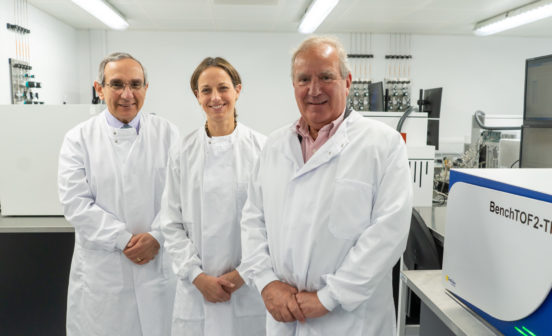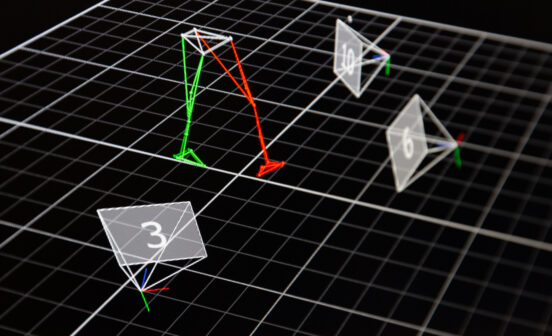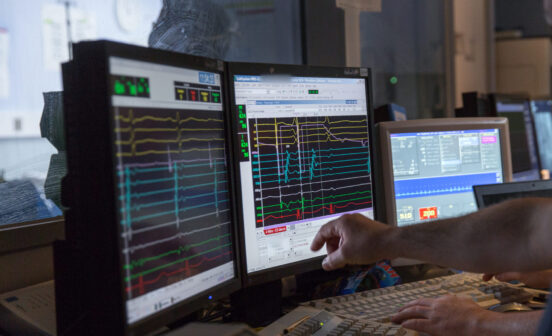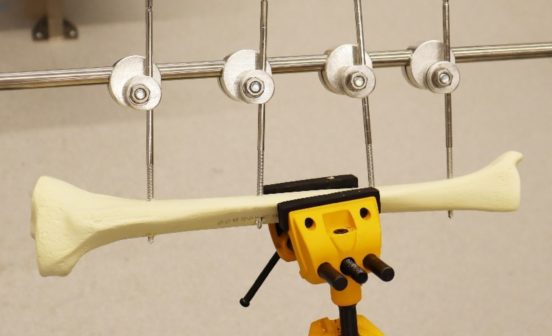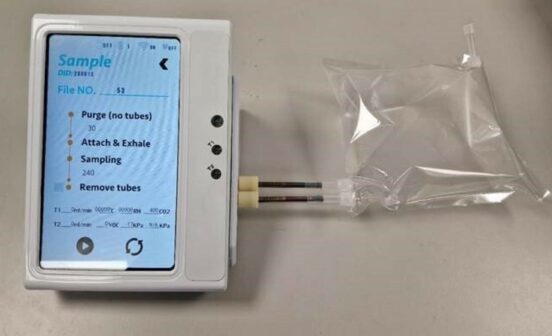DeviceInnovationPartnershipVideo Augmented reality technology enables more accurate surgery
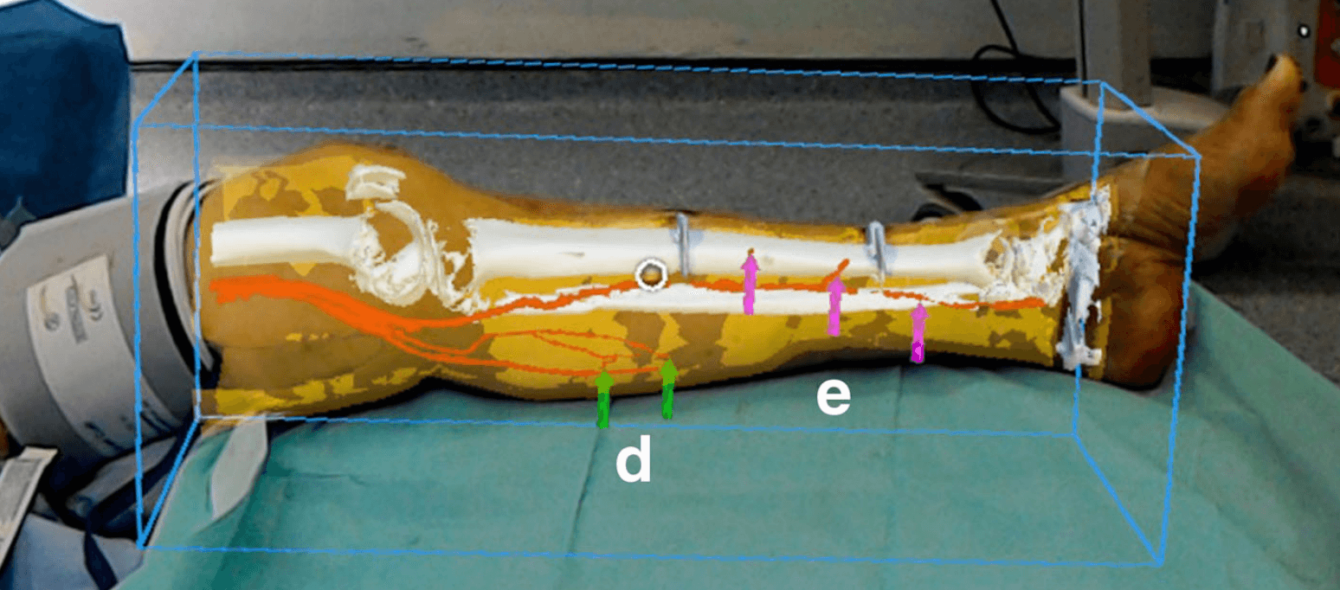
Image taken directly from the publication, arrows highlighting position of (d) medial sural and (e) posterior tibial perforators.
Researchers from the NIHR Imperial BRC Surgery & Technology Theme adopted Microsoft’s augmented reality headset to ‘see’ inside patients in the operating theatre, for safer, more accurate surgery and better overall outcome.
Traditionally, to picture blood vessels underneath the skin during surgery, particularly in cases with severe tissue damage, surgeons relied on hand-held ultrasound scanners that detected blood movement, which lacked precision. The Microsoft HoloLens™ headset places the wearer into ‘mixed reality’, where digital 3D models are overlaid with the actual surroundings. Researchers at St Mary’s Hospital, Paddington, used Computerised Tomography (CT) scans of patients’ legs to create 3D models of the limbs, including a map of the blood vessels, position of the bones, muscle and fatty tissue. The headset allowed these digital models to be virtually superimposed onto the patient during reconstructive operations, which allowed visualisation of blood vessels quickly and accurately, maximising the chances for rapid wound healing.
Dr Philip Pratt, a research fellow within the NIHR Imperial BRC Surgery & Technology Theme, and the lead author of this study, said: “Through this initial series of patient cases we have shown that the technology is practical, and that it can provide a benefit to the surgical team. With the HoloLens, you look at the leg and essentially see inside of it. You see the bones, the course of the blood vessels, and can identify exactly where the targets are located”.
This technology is still in the early phases of clinical adoption, as cases so far only involved legs, which have clear reference points, such as ankles and knees, that are used for digital modelling. The study team acknowledged that areas such as abdomen would require a lot more refinement for precise alignment of the digital simulation. In the meantime, the group plans to trial this technology in a larger cohort of patients, and at multiple centres.
Dr Pratt was recently awarded a pilot grant from the NIHR Imperial BRC Surgery & Technology Theme project competition, to test this augmented reality approach for acute subdural haematoma in a laboratory setting.
You can watch an example of HoloLens™ in action here:

